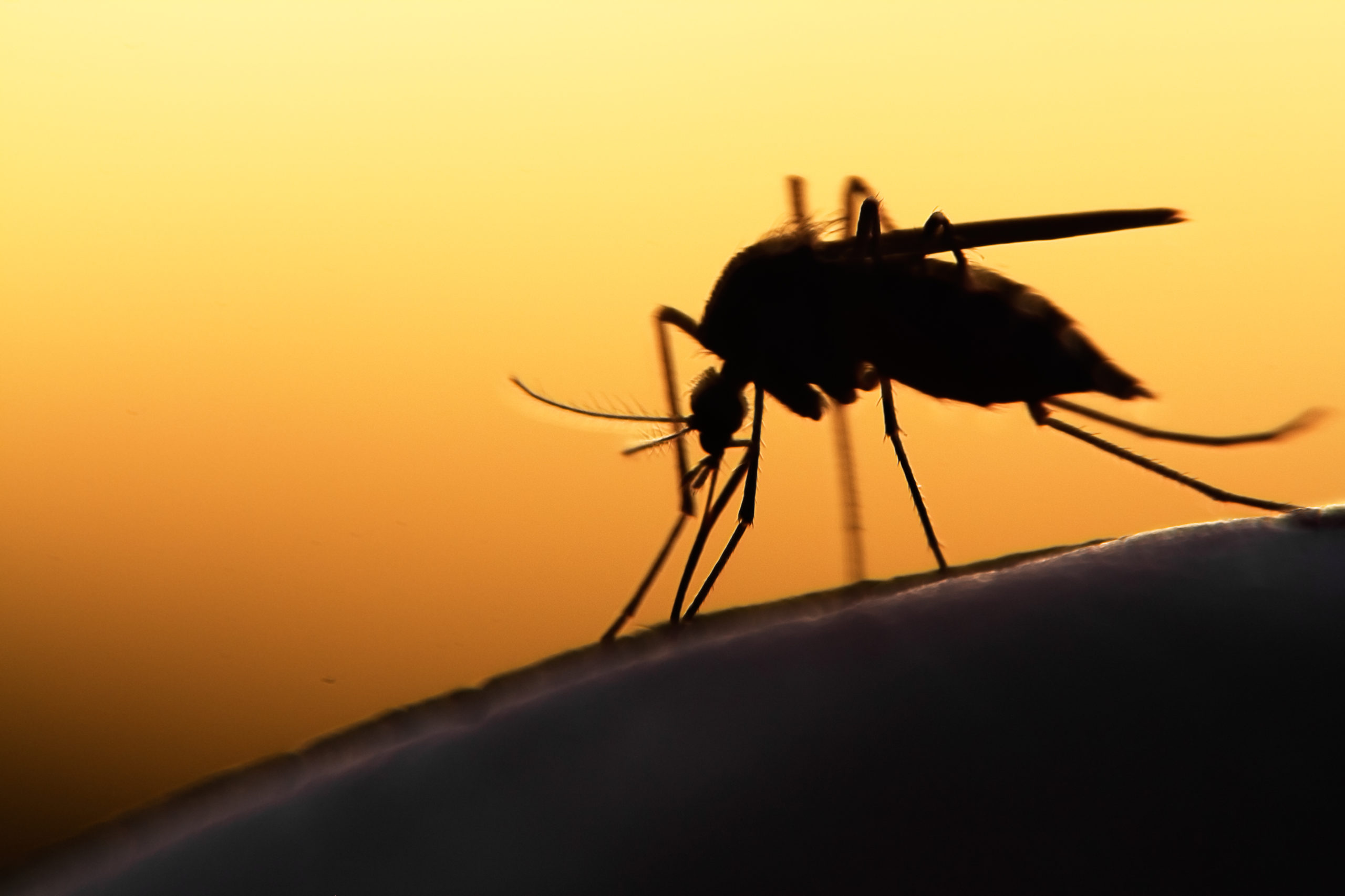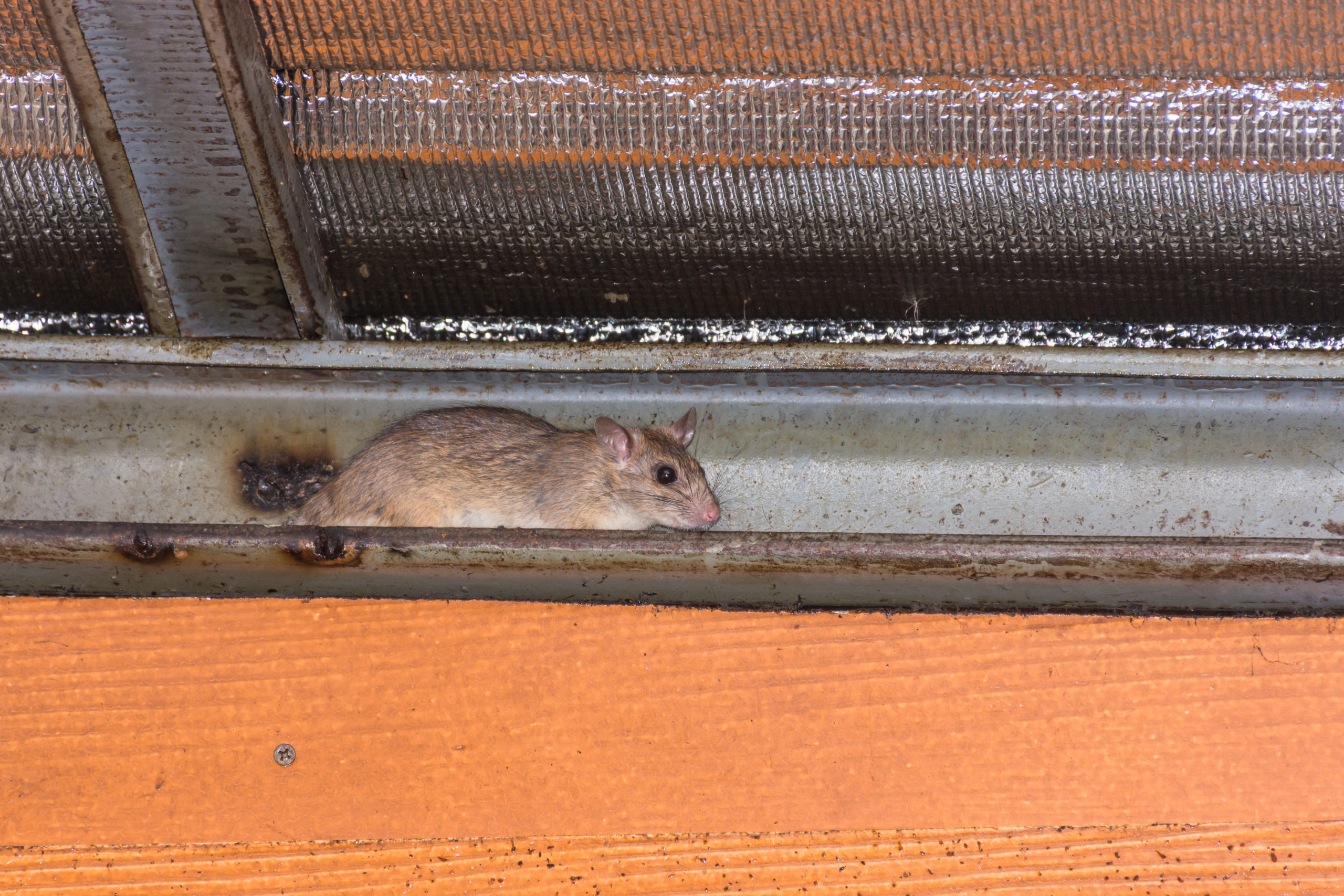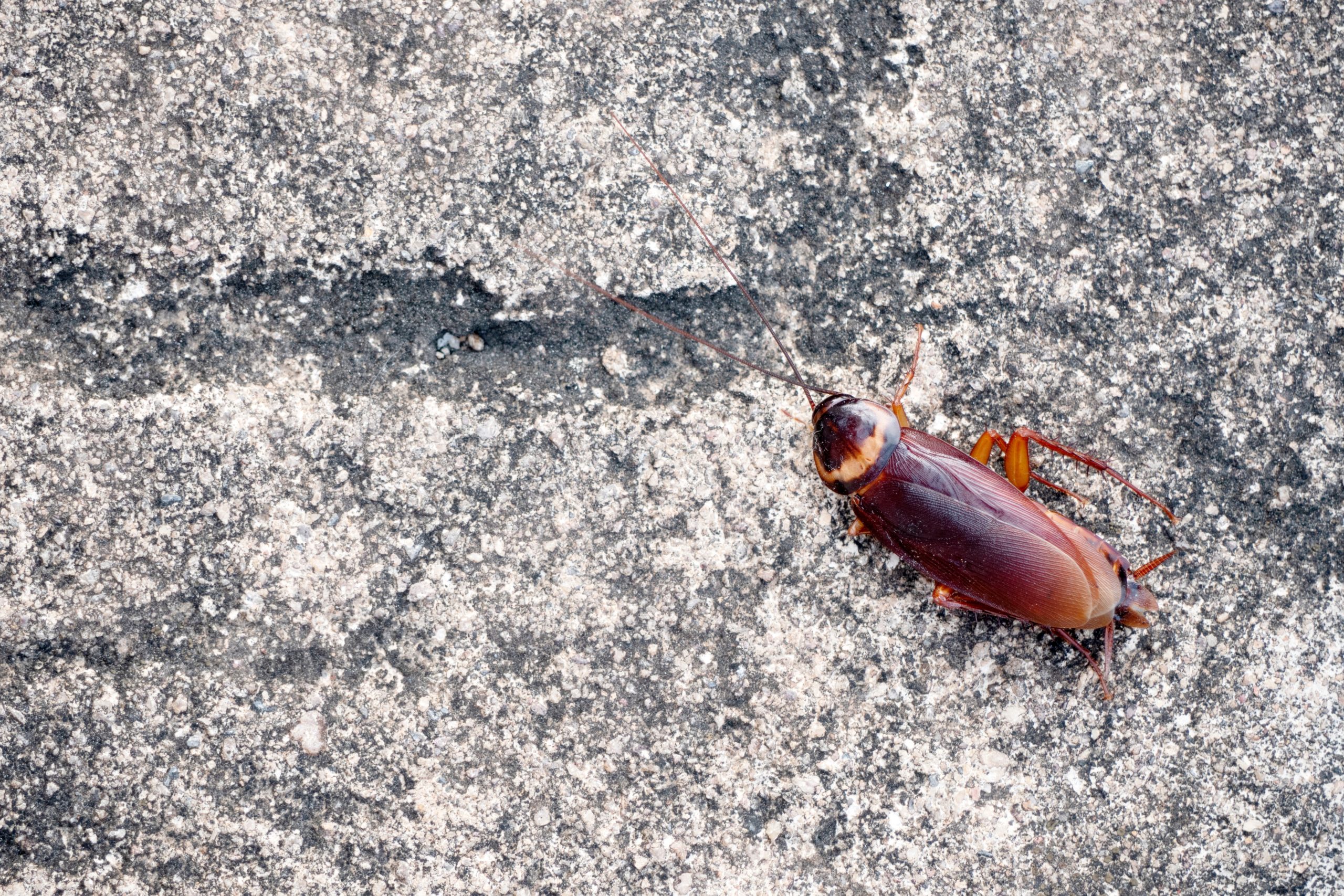5 Types of Gutter-Loving Pests
5 Types of Gutter-Loving Pests
The gutter is one of the most forgotten necessary components of any home and building. It is the trough that rests against the base of the roof to catch runoff water and direct it away from the home, forcing it out through the downspout. If we didn’t have gutters, moisture damage and roof problems would be even more common. But the major downside of having gutters, besides the fact that they notoriously gather all kinds of leaves and natural debris, is that they make an ideal home for certain pests when the trough is not cleaned out. Let’s take a look at five typical gutter pests and how they cause more problems than a bunch of wet leaves.
Stinging Insects

It may seem strange that wasps, bees, and other stinging pests would find a gutter appealing, since they make their own homes in handmade nests and hives. But the gutter is actually an appealing location to stinging insects for a couple of reasons. First, gutters are high off the ground and the interior is hidden from view. This protects them from their typical predators down below. Secondly, there are plenty of hiding spots within the gutter to secure their nests and make them even more difficult to attack. Their favorite places include in the corners, under brackets, and in the clearest spots. Stinging insects can actually use the organic debris found in gutters as material for their nest construction, which is yet another reason to keep a clean gutter.
There are a few different kinds of stinging insects that we often see hiding in gutters. Paper wasps prefer to attach their nests to the underside of a gutter, the papery cells being difficult to spot if the insects place them underneath the gutter just right. Yellow jackets can build their massive nest inside the gutter, but they also like to attach the monstrosity to the underside of the gutter. Even though their homes are far enough off the ground to not be accidentally disturbed by anyone, it is still risky to have a stinging insect nest around the gutter. These are some of the most defensive pests and will not hesitate to attack anyone who is close to the nest. Speaking of, the nest itself can damage gutters by pulling them down and eventually causing damage that needs to be repaired. If you see individual insects crawling around the gutter, it is likely a swarm. This is a problem for professional pest control, as the pests could potentially go into the walls if they find an entry point between the gutter and roof.
Mosquitos

Mosquitos may be the most frequent inhabitant of cluttered gutters. This is because the only criteria mosquitos have for an egg-laying site is that there needs to be at least a little stagnant water. A gutter that is clogged with debris and therefore has undisturbed water can have swamp-like qualities over time, which is ideal for mosquitos. They lay “rafts” of up to 200 eggs in water or damp soil, and the young mosquitos spend their whole lives up to adulthood in the water. Any leaves and debris in the gutter are sources of nutrients for mosquitos, which in turn helps the larvae to develop even faster. And considering the life span of female mosquitos is just under two months, what starts as one mosquito family can turn into a major swarm.
The accumulation of natural debris in a gutter becomes a chain reaction, as related to the life cycle of mosquitos. The more leaves and leaf litter that gathers in a gutter, the more water will pool up and gather with each rainfall. As the water becomes stagnant and is filled with plant debris, mosquitos can reproduce and lay their eggs in the gutter for months on end. It is even worse when the weather heats up and conditions become humid outside, as mosquitos thrive in the humidity. The best way to prevent mosquitos specifically is to ensure that the gutter is functioning properly. These insects will not be able to use this as an egg-laying site if the water is clean and flowing as usual. Warm weather is mosquito weather, but it shouldn’t be encouraged by a blocked gutter.
Rodents

When rodents invade the gutter, it is a major sign to have them cleaned ASAP. The elevated surfaces are just what rats and mice like, since it provides additional protection for them. If any trees or tall plants are close enough to the gutter, rodents can use these as natural freeways to the gutter. Rats can jump about four feet and mice about thirteen inches, so both species usually have no problem reaching a gutter with a little help. They can scurry along the length of the gutter, but their nesting location often ends up in the downspout for the most protection out of the whole contraption.
As with smaller pests, rodents can use gutter debris to build their nests. They like to use scraps and organic material of all kinds, including twigs, leaves, fabric, grass, and cotton. The typical objects that gather in an uncleaned gutter are prime nest-building material for rodents, so they don’t have to leave the comfort of the gutter in order to build their nests. If they move around enough, and if the surrounding environment is quiet enough, it is possible to hear rats or mice scampering throughout the gutter. This is one of the first and most clear signs of an invasion, especially if it is accompanied by a blocked downspout. But the nightmare doesn’t end there. If the rodents chew through the vents or siding, they can invade the interior of the home, usually the attic. But even if they never get inside, a dead rat or mouse will start smelling and attract other pests almost immediately. When it comes to rodents, it is best to use pest control as soon as you know that rats or mice are making their homes in the gutter.
Wood-Boring Pests

The gutter itself may not be made of wood, but there are plenty of wood components that the gutter can grant access to for the persistent wood-boring pests. The hardware that connects the gutter to the house punctures the wood, which can accumulate damage over time. This wood is susceptible to becoming rotten, damp, or moldy if the moisture builds up enough. Between the gutter debris and the damaged wood, it is a wood-boring pest’s paradise. There are many species that fall under this category, and they make their homes in unhealthy wood that is preferably isolated from larger critters. Once the pests create little holes in the wood and start crafting their tunnels, the wood will become hollow and spongy.
Some of the most frequent visitors of wood within gutter spaces are termites, carpenter ants, and beetles. All three are drawn to damaged wood, and carpenter ants in particular love moist wood. For the pests that do not eat the wood they chew through, like carpenter ants and certain beetles, the bounty of natural debris in the gutter is perfect for them. But besides chewing through the wood attached to the gutter, these pests can cause multiple problems for a house if they break through. Wood-boring pests are notorious for causing expensive damage to a structure that only grows with time. If these pests chew through the wood and make their way inside, they can cause structural damage to the ceilings, framework, and walls. It can be costly to handle a pest problem, but it is better to control a group of pests than to pay for extensive repairs to the home.
Cockroaches

If there is one quality of roaches that everyone knows, it’s that they can survive in just about any environment. As long as there is some moisture and a food source anywhere in the area, roaches will be happy to set up shop. In gutters, they like the consistent moisture and natural debris that acts as their food. Roaches eat anything organic and decaying, which can be found all throughout a cluttered gutter. They also prefer to stay in the darkness as much as possible, which they achieve by being nocturnal and doing most of their scavenging at night. Some roach species fly, but most of the common species cannot fly at all. They rely on their speedy crawling to get around, and can produce a scurrying sound in the gutter if enough of them are moving around.
Since cockroaches are never satisfied with their current shelter, they will make their way inside a home if they find an opening near the gutter. The appeal of a secure shelter with ample food is too appealing for a lowly pest species, like the roach. But the problems with a roach invasion go beyond simply having a lot of pests in the house. Cockroaches are one of the dirtiest household pests, and are known to make residents of a home sick if the roaches stay for long enough. They carry multiple diseases, like cholera and salmonellosis, that they transmit either directly or indirectly to humans. If roaches find the food in the kitchen cabinets or pantry, it is a nightmare. Anything that they touch is contaminated and should be thrown out immediately, and all surfaces need to be thoroughly disinfected. A family of roaches in the gutter is frustrating enough, but it’s much worse to have them indoors.
When Gutter Pests Get You Down, Go Green!

Clean gutters correlate with pest-free gutters, since the aforementioned invaders will not have the same resources that they would with a cluttered gutter. Whether you hire professional gutter services or choose to DIY, the cleaning process can also double as an inspection of any new pests or nests. If you choose to tackle it yourself, make sure to wear gloves and test the flow of water afterward by using a hose. It is recommended to have the gutters cleaned twice a year, especially if there are multiple trees around the home. For gutters that seem to be consistently clogged, products like gutter guards and mesh downspout coverings can help with preventing both debris and pests from making a mess.
For the pests that decide the rest of your yard and house make for a great shelter, Green Pest Services is here to help! We always begin our visits with an inspection of the property to scope out any new entry points, nests, live pests, and damage. This is what helps us to make a treatment plan based on your specific pest issues. Since we only use eco-friendly treatments, you can be confident that your problems will be solved without dangerous chemicals lingering after the visit is over. Contact us to learn more about our thorough services and how our team can keep your home pest-free, rain or shine!
Citations
5 common pests that live in messy gutters. (2020, February 14). My Gutter Pro. Retrieved January 24, 2023, from https://mygutterpro.com/5-common-pests-that-live-in-messy-gutters/
6 pests that could be living in your gutters and how to get rid of them. (n.d.). Cedarcide. Retrieved January 24, 2023, from https://cedarcide.com/blogs/guides/6-pests-that-could-be-living-in-your-gutters-and-how-to-get-rid-of-them
Schwartz, D.B. (n.d.). 5 pests that may be living in your gutters – And what you can do about it. Bob Vila. Available at https://www.bobvila.com/slideshow/5-pests-that-may-be-living-in-your-gutters-and-what-you-can-do-about-it-50504 (Accessed on January 24, 2023).
Types of bugs that may be in your gutters. (n.d.). Terminix. Retrieved January 24, 2023, from https://www.terminix.com/blog/bug-facts/gutter-bugs/
What causes pests to breed in your gutter?. (2022, June). Squeegee Squad. Retrieved February 6, 2023, from https://squeegeesquad.com/gutters/what-causes-pests-to-breed-in-your-gutter/
What pests like to call your gutters home. (2016, July 17). Apex Pest. Retrieved February 6, 2023, from https://www.apexpest.com/pests-like-call-gutters-home/
8 Creative Ways to Have a Pest-Free Fourth of July
8 Creative Ways to Have a Pest-Free Fourth of July 8 Creative Ways to Have a Pest-Free Fourth of July Summary: The Fourth [...]
A Simple Guide to Preventing Stinging Pests
A Simple Guide to Preventing Stinging Pests A Simple Guide to Preventing Stinging Pests Summary: Stinging insects are more active in warm weather, [...]
These 10 Natural Mosquito Repellents Can Actually Help
These 10 Natural Mosquito Repellents Can Actually Help These 10 Natural Mosquito Repellents Can Actually Help Summary: Natural mosquito repellents are easier to [...]
How to Get Rid of Carpet Beetles
How to Get Rid of Carpet Beetles How to Get Rid of Carpet Beetles Summary: Carpet beetles are sneaky pests that don’t usually [...]
How Do Roaches Affect Asthma and Allergies?
How Do Roaches Affect Asthma and Allergies? How Do Roaches Affect Asthma and Allergies? Summary: It’s no secret that pests impact human health, [...]
These 5 Carnivorous Pests Might Surprise You!
These 5 Carnivorous Pests Might Surprise You! These 5 Carnivorous Pests Might Surprise You! Summary: There are many eco-friendly ways to prevent pests, [...]

